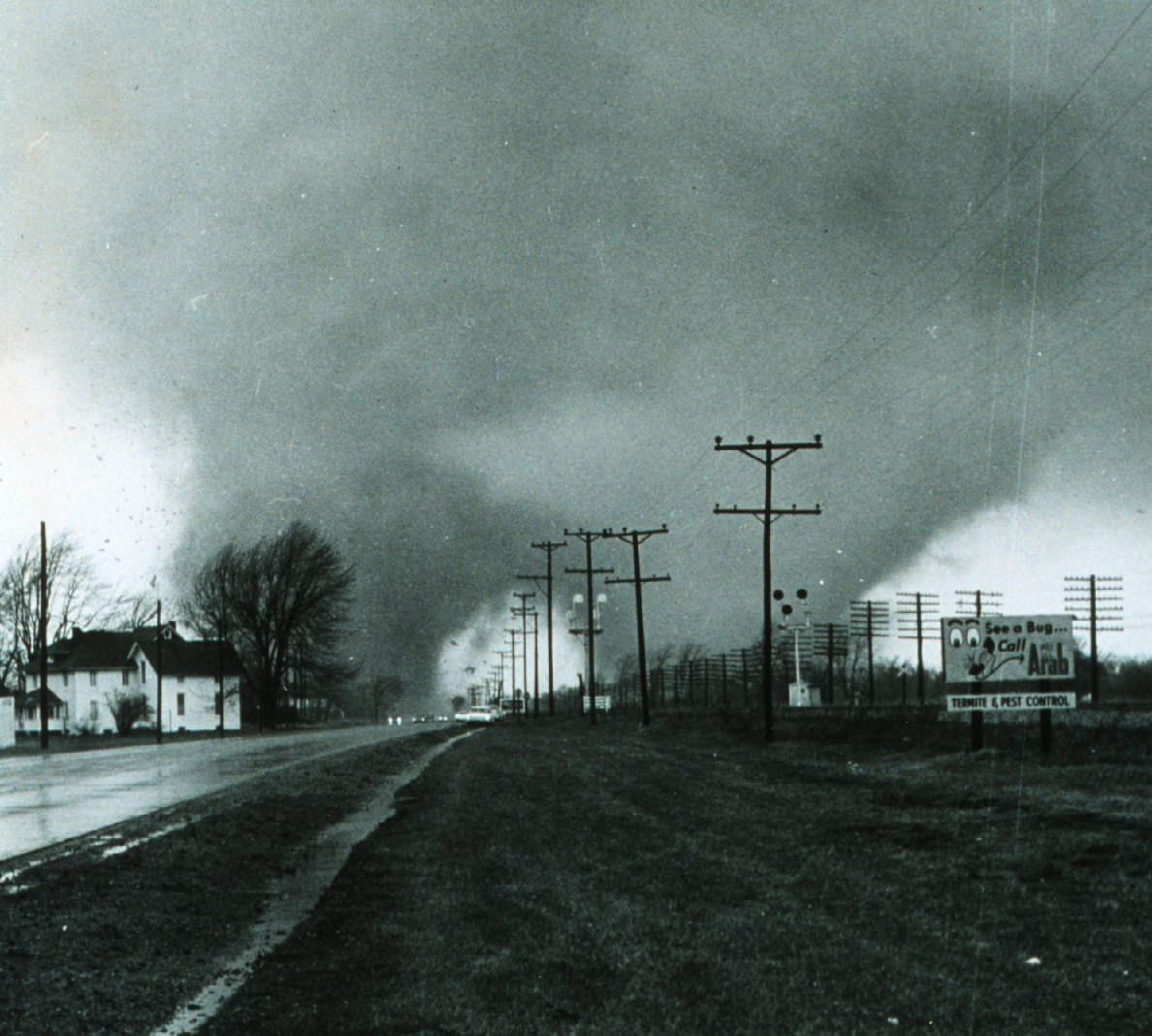
Tornadoes are complex storm systems with complicated recipes that lead to their destruction. As such, they are ripe for blockbuster movies. This week, Twisters, the not-quite a sequel to the 1996 classic film, will release nationwide, inviting viewers back into the lives of the tornado storm chasers.
But a lot has happened in the past 28 years since the original movie aired, not just in film but in science. The way we study, predict, and react to tornadoes has evolved greatly in the last three decades.
Ahead of the release of Twisters, Inverse spoke with Harold Brooks, senior research scientist at NOAA’s National Superstorms Laboratory, to better understand some of the violent phenomena laid out in the movie’s trailer and our evolving relationship with them.
This interview has been edited and condensed for clarity.
In the trailer for the movie Twisters, there is a scene where a person is looking out their car window and they see two funnels and shouts, “We got twins!” How can you get more than one tornado from the same storm system?
It's not uncommon for a storm to make more than one tornado. Six or seven out of a single storm is normal. In fact, there's probably not a real limit on how many you can have.
If you look at photographs of tornadoes, you might think each one is distinct. But they are all inside one big, complicated parent rotation. The main tornado reaches the ground first and intensifies quickly. But smaller tornados may appear nearby that typically rotate in the direction opposite the primary one. One tornado tends to move slightly to the left and back, most of the time, and it eventually goes back behind the middle of the rotation area. The air back there is a little bit colder because there’s more rain there. That tornado has gone back behind, basically to die.
At the same time, another tornado might form ahead and intensify. If everything lines up just right, you can see both of them at the same time. One's intensifying, one's decaying.
Does that mean the path of damage, in some cases, can be longer, because you have a relay race, one tornado after the other?
The dying tornado (which is the first tornado), if everything works out just right, can line up its damage path with the new tornado that is forming. In the old days of damage surveys, before video, this behavior might make it look like there was only one damage path.
We've got cases from the past in which we’ve seen, if there was an absence of the photograph of these two tornadoes at the same time, the damage survey says there was only one tornado.
We've got really good evidence for the duo. The best example of that one is on March 13, 1990 in Kansas. Its textbook. Here are the two tornadoes, and the damage paths just start to look like it's one continuous damage path.
The most famous photograph of one is Palm Sunday, 1965, from Elkhart, Indiana.
They were two really strong tornadoes at the same time. We're pretty sure that was probably that mechanism: one's dying, and the other one's just formed.

On April 9th, 1947 there was a big tornado event known for its impact on Woodward, Oklahoma. It's the deadliest tornado in Oklahoma history.
In the original write-up, it's described as one tornado. But when they went back and interviewed people later and got more documentation, analysts found evidence of six tornadoes total, along that path.
When we look in the really old records of tornadoes, That's always a question. For example, the Mattoon Charleston tornado of May 26, 1917 in Illinois is listed as the longest track tornado. It's like 293 miles. It's exceptionally unlikely that that was one tornado. You look at the plot, you kind of go, there's a relatively large change of direction.
The movie Twister came out 28 years ago. In your experience, have tornadoes evolved at all in the last three decades?
If you look at the average number of tornadoes per year in the United States in the past 50 years (eliminating the weakest ones and focusing only on the ones that’ll cause at least a little bit of damage), we get about 500 of those yearly.
There’s no statistically significant change in trend in that. But what has changed is the way tornadoes are distributed.
We're having fewer days with a tornado, but more days with a lot of tornadoes. There’s now an increased variability. We just may have more of those big days. You experience more threats in a short period of time, but also you may have larger gaps between when you have a threat.
Most tornadoes occur between the Rockies and the Appalachians in the US. Now, in the eastern part of that region, we are seeing more of the bigger days.
We've seen an increase in the number of tornadoes of about maybe 10 percent in the last 40 to 50 years in what we call the Mid-South. Take a point just south of Memphis and draw a circle around it of a couple hundred miles and that’s the mid-south.
But there’s also a decrease of about a similar size in west Texas up through western Kansas.
Tracking tornadoes and how they evolve is crucial to keeping people safe. A fairly long track tornado in western Oklahoma could very likely hit no houses. But that won’t happen in northern Alabama. In this region, tornadoes are more likely to occur after dark and the region itself has more poverty-stricken areas, including more people living in mobile homes, so tornadoes are disproportionately more deadly there than the tornadoes in the plains.







